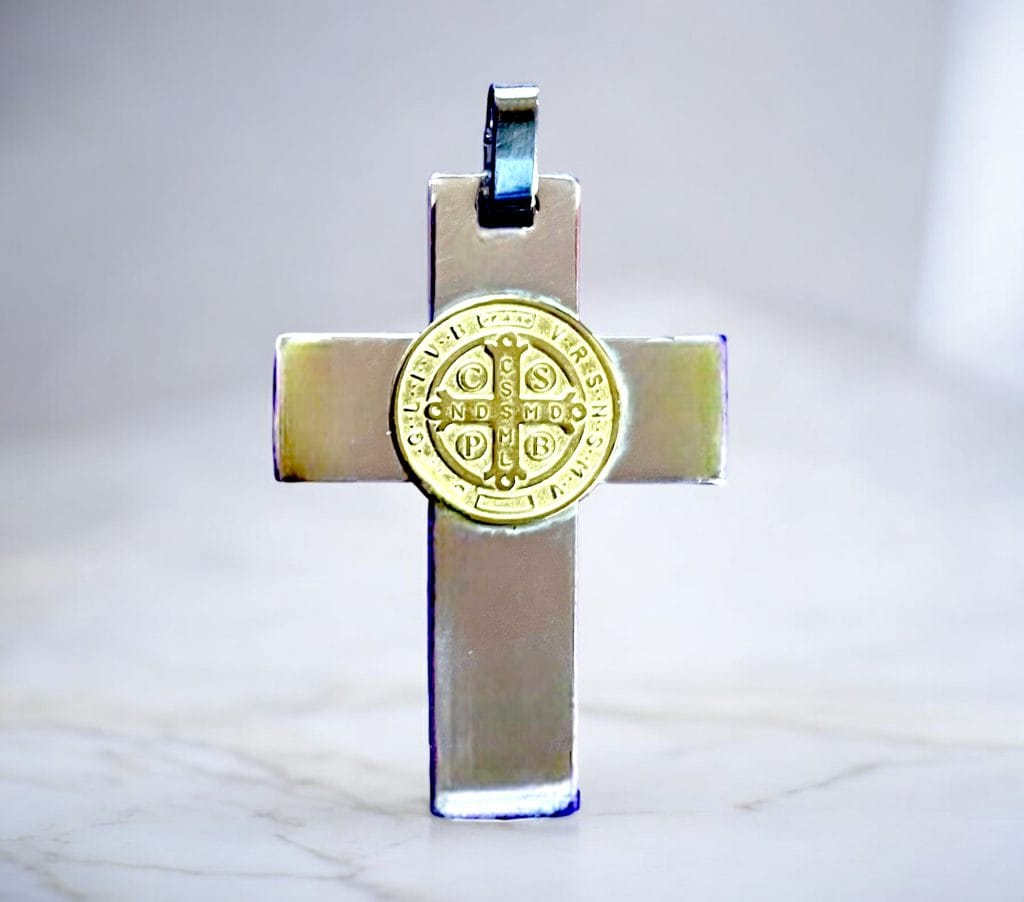Saint Benedict of Nursia:
Saint Benedict of Nursia (480-547) is known as the founder of Western monasticism and is venerated as a saint in the Catholic Church, the Orthodox Church, and the Anglican Communion. He was born in Nursia, Italy, into a noble family with Roman senatorial connections. From a young age, Benedict sought a life of prayer and seclusion, retreating to live as a hermit in a cave in Subiaco. Throughout his life, Benedict promoted a vegetarian diet and an austere lifestyle.
Benedict is especially remembered for writing the “Rule of Saint Benedict,” a set of precepts that guide monastic life based on prayer, work, and community living. This rule has been fundamental to the development of Western monasticism and remains the basis of life in many Benedictine monasteries today. He founded the Monastery of Monte Cassino, where his sister, Saint Scholastica, also resided.
The Benedictine Order:
The Benedictine Order is a confederation of monastic communities that follow the Rule of Saint Benedict. Benedictines are dedicated to prayer, study, and manual labor, living under the motto “Ora et Labora” (Pray and Work). Benedictine monasteries have been centers of culture, education, and spirituality throughout the centuries, significantly contributing to European civilization.
The Arrival in Argentina and the United States:
The Benedictines arrived in Argentina at the end of the 19th century. The first Benedictine monastery in Argentina was the Abbey of Niño Dios in Victoria, Entre Ríos, founded in 1899 by monks from Beuron, Germany. Subsequently, other monasteries were established, such as the Abbey of San Benito in Luján.
In the United States, the Benedictines established themselves in the 19th century with the founding of Saint Vincent Archabbey in Latrobe, Pennsylvania, in 1846 by monks from the Abbey of Metten in Germany. Since then, the order has expanded significantly, establishing numerous monasteries and contributing to the development of education and spiritual life in the country.
The Medal of Saint Benedict:
The Medal of Saint Benedict is one of the most revered sacramentals in the Catholic Church. This medal contains various symbols and prayers associated with protection against evil. On the obverse, it shows an image of Saint Benedict holding a cross in one hand and his rule in the other. On the reverse, there is a cross with the following initials and their meanings:
C.S.S.M.L: “Crux Sacra Sit Mihi Lux” (May the Holy Cross be my light)
N.D.S.M.D: “Non Draco Sit Mihi Dux” (Let not the dragon be my guide)
V.R.S: “Vade Retro Satana” (Begone, Satan)
C.S.P.B: “Crux Sancti Patris Benedicti” (The Cross of the Holy Father Benedict)
N.S.M.V: “Non Suade Mihi Vana” (Do not suggest vain things to me)
S.M.Q.L: “Sunt Mala Quae Libas” (The drinks you offer are evil)
Why It Is Said to Contain an Exorcism:
The Medal of Saint Benedict is known for its protective power and is used in exorcisms. It is believed that the prayers and inscriptions on the medal have the ability to repel evil spirits and protect those who wear or use it with faith. This tradition is based on historical accounts and popular devotion to Saint Benedict as a powerful intercessor against evil. The medal was approved in 1742 by Pope Benedict XIV, who granted a plenary indulgence to the medal and the crucifix in which it was embedded. Notably, during the Allied bombings in World War II, the monastery at Monte Cassino, where the remains of Saint Benedict and Saint Scholastica are enshrined, remained intact, further increasing the devotion to this powerful symbol.
Virtues of the Medal of Saint Benedict:
- Protection against evil and temptation.
- Defense against diseases and dangers.
- Spiritual strength and courage in times of trial.
- Aid in seeking inner peace and serenity.
- Encouragement for a more devout and disciplined Christian life.
Occasions to Use and Gift It:
- Personal Use: Wear it as a pendant, bracelet, or keep it in your pocket for daily protection.
- Gifts: A meaningful gift for those facing difficult times, starting a new phase in life (such as marriage or a new job), or for friends and family seeking to strengthen their faith.
- Religious Ceremonies: Use it in baptisms, confirmations, and other religious ceremonies as a symbol of protection and faith.
- In the Home: Place it in your home or car to bless and protect these spaces.
- Personal Use: Wear it as a pendant, bracelet, or keep it in your pocket for daily protection.
- Gifts: A meaningful gift for those facing difficult times, starting a new phase in life (such as marriage or a new job), or for friends and family seeking to strengthen their faith.
- Religious Ceremonies: Use it in baptisms, confirmations, and other religious ceremonies as a symbol of protection and faith.
- In the Home: Place it in your home or car to bless and protect these spaces.
Occasions to Use and Gift It:
